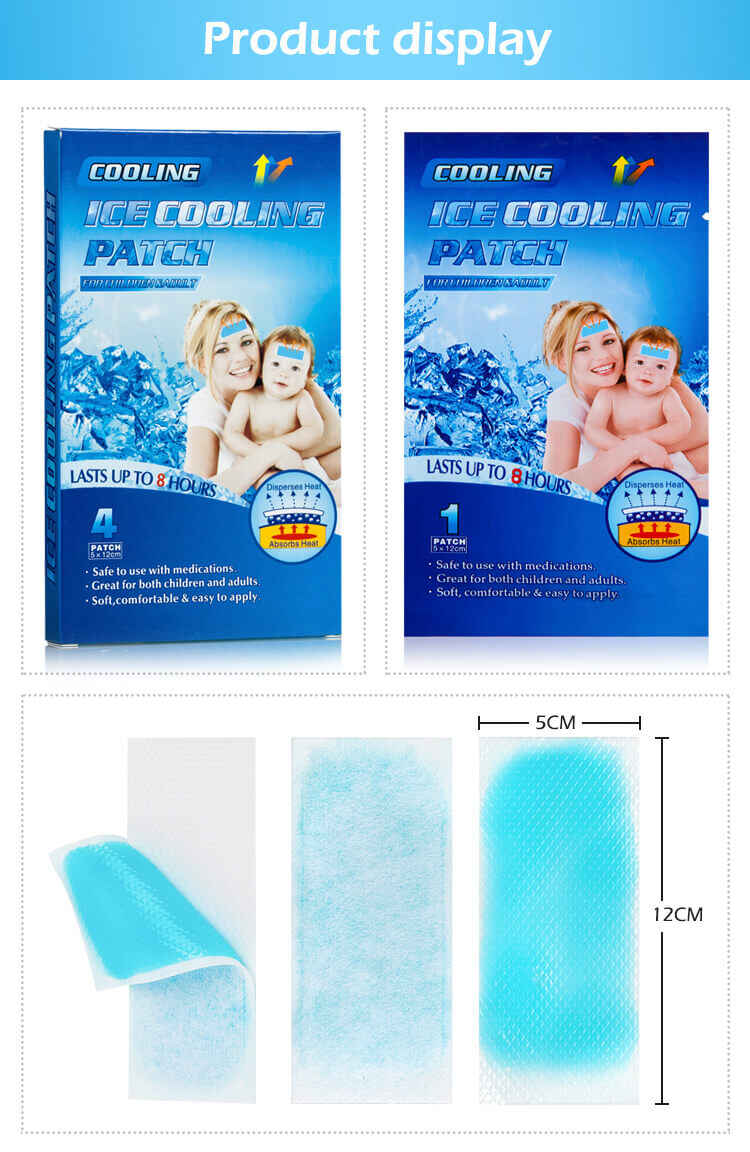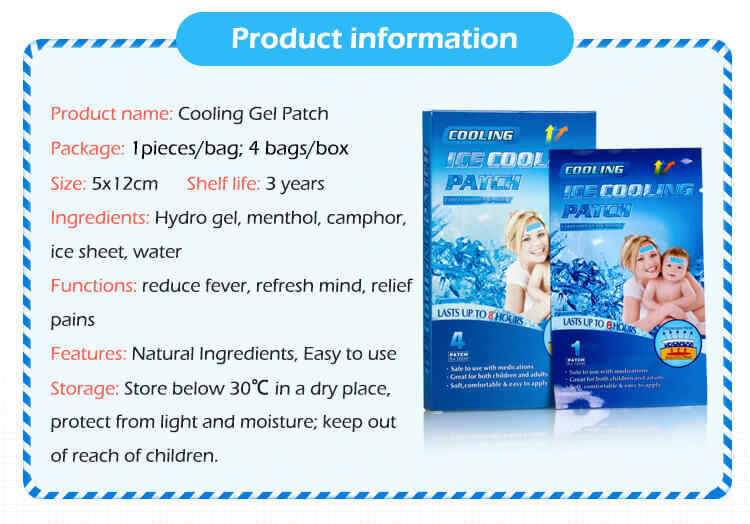What Certifications Should a Fever Cooling Patch Supplier Have?
Ensure Compliance, Safety, and Market Success with the Right OEM Partner
Introduction
In today’s health-conscious market, working with a certified fever cooling patch supplier isn’t just about compliance—it’s about building trust with your customers and ensuring product effectiveness. Whether you’re looking to launch a Private Label fever cooling patch, develop a Custom fever cooling patch, or partner with an experienced fever cooling patch OEM, certifications are a non-negotiable factor for success.
In this article, we’ll explore the most critical certifications a fever cooling patch Manufacturer should have, how these certifications benefit your brand, and what to look for when choosing a reliable supplier. By the end, you'll have a complete understanding of how to evaluate and select the right partner to ensure product safety, regulatory approval, and long-term success in competitive markets.

1. Why Certifications Matter in the Fever Cooling Patch Industry
1.1 Assurance of Product Safety and Quality
Certifications from accredited bodies ensure that the fever cooling patch Manufacturer follows standardized procedures and uses safe, effective materials. These certifications guarantee that every Private Label fever cooling patch or Custom fever cooling patch is manufactured under strict quality control measures.
1.2 Legal and Regulatory Compliance
Different markets have varying regulations. A certified fever cooling patch OEM ensures that your product meets local requirements in the US, EU, Asia, and beyond, making international distribution possible.
1.3 Brand Reputation and Market Access
Retailers and consumers alike look for quality assurance. Products backed by recognized certifications can enter pharmacies, online stores, and hospitals more easily—and they win customer trust faster.
2. Key Certifications to Look For in a Fever Cooling Patch Supplier
2.1 ISO 13485: Medical Device Quality Management System
Importance: ISO 13485 certification ensures the supplier operates a quality management system specifically designed for medical devices like fever cooling patches.
Benefits:
Aligns with international quality standards
Essential for CE marking and FDA submissions
Ensures risk management during production
2.2 CE Marking (for EU Market)
Importance: The CE mark shows that the fever cooling patch OEM complies with EU safety, health, and environmental protection standards.
Benefits:
Required for legal sale in European countries
Demonstrates conformity with EU regulations
Boosts credibility among European consumers
2.3 FDA Registration (for US Market)
Importance: FDA registration confirms that the fever cooling patch Manufacturer complies with the U.S. Food and Drug Administration’s safety and quality guidelines.
Benefits:
Enables sales in the US market
Ensures adherence to medical-grade standards
Signals legitimacy and reliability
2.4 GMP (Good Manufacturing Practices)
Importance: GMP certification ensures manufacturing practices that meet regulatory requirements, hygiene, and traceability standards.
Benefits:
Guarantees consistent product quality
Reduces contamination risks
Required in most major markets
2.5 MSDS (Material Safety Data Sheet)
Importance: The MSDS provides detailed information about the ingredients in a Custom fever cooling patch.
Benefits:
Required for import/export clearance
Supports transparency and regulatory compliance
Important for assessing potential allergens or irritants
2.6 ISO 9001: Quality Management System
Importance: Although broader than ISO 13485, ISO 9001 still indicates strong operational procedures and quality control.
Benefits:
Promotes continuous improvement
Ensures process efficiency
Demonstrates overall business reliability
2.7 SGS or Third-Party Testing Reports
Importance: Independent test reports from global bodies like SGS validate product safety and efficacy.
Benefits:
Adds an extra layer of product credibility
Verifies that claims like “8-hour cooling effect” are valid
Assures buyers and regulatory agencies alike
3. How to Verify These Certifications
3.1 Request Documentation
Ask your fever cooling patch Supplier to provide copies of all certificates, including dates of issue and renewal. This proves current compliance.
3.2 Cross-Check with Official Bodies
You can verify FDA registration through the FDA database, and CE marking via Notified Bodies in the EU. ISO certifications can also be confirmed through the issuing registrar.
3.3 Ask for Audit Reports or Compliance Histories
A reliable fever cooling patch OEM will often have internal or third-party audit reports. Reviewing these can offer insight into the consistency of their quality standards.
4. Red Flags to Watch Out For
Outdated certificates: Expired documentation means the supplier may not follow current standards.
No GMP or ISO 13485: This suggests poor manufacturing controls.
No third-party test reports: Lack of transparency about product safety is a warning sign.
Inability to explain certifications: A professional fever cooling patch Manufacturer should clearly explain their certifications and relevance to your project.
5. Certification Requirements for Different Business Models
5.1 For Private Label Fever Cooling Patch Projects
You need full documentation to satisfy regulatory requirements under your brand. Choose a Private Label fever cooling patch partner with CE, FDA, ISO 13485, and GMP as a minimum.
5.2 For Custom Fever Cooling Patch Development
When modifying formulas or sizes, certifications like MSDS and third-party safety tests become crucial. The Custom fever cooling patch supplier must demonstrate their ability to manage ingredient safety.
5.3 For International Distribution
If your business spans multiple countries, work with a fever cooling patch OEM that holds global certifications to avoid re-certification costs and delays.
6. Benefits of Working with a Fully Certified Fever Cooling Patch Manufacturer
6.1 Accelerated Market Entry
Certifications simplify regulatory approval, speeding up launch timelines.
6.2 Fewer Legal Risks
Fully certified products minimize the risk of recalls, fines, or import bans.
6.3 Brand Differentiation
A fully certified Private Label fever cooling patch gains an edge over generic competitors, supporting premium pricing.
6.4 Enhanced Customer Confidence
Consumers trust products that meet global safety and performance benchmarks, resulting in stronger brand loyalty.
Conclusion
Choosing a fever cooling patch Manufacturer with the right certifications is not just a technical detail—it’s a strategic decision that affects every part of your product's success. Whether you're launching a Custom fever cooling patch, scaling up a Private Label fever cooling patch line, or partnering with a fever cooling patch OEM for global reach, certifications ensure that your brand is built on a solid foundation of quality, compliance, and credibility.
Always prioritize suppliers with certifications like ISO 13485, FDA, CE, GMP, and third-party testing to ensure your fever cooling patch is safe, effective, and market-ready.
Related Questions and Answers
Q1: Can I sell a fever cooling patch in the US without FDA registration?
A: No. FDA registration is essential for any fever cooling patch OEM product sold in the United States.
Q2: Is ISO 9001 sufficient for medical patches?
A: ISO 9001 is helpful, but for medical products like fever cooling patches, ISO 13485 is the more relevant certification.
Q3: What does GMP certification ensure in a fever cooling patch Supplier?
A: GMP ensures that the manufacturer follows strict hygiene and production protocols, reducing contamination and ensuring consistent quality.
Q4: How do I know if a supplier’s certifications are real?
A: You can verify them through issuing bodies or government databases, such as the FDA’s registration lookup tool.
Q5: Are third-party lab test reports necessary for Private Label fever cooling patches?
A: Yes. They offer independent proof of safety and performance, which is especially important for branded retail or medical applications.






